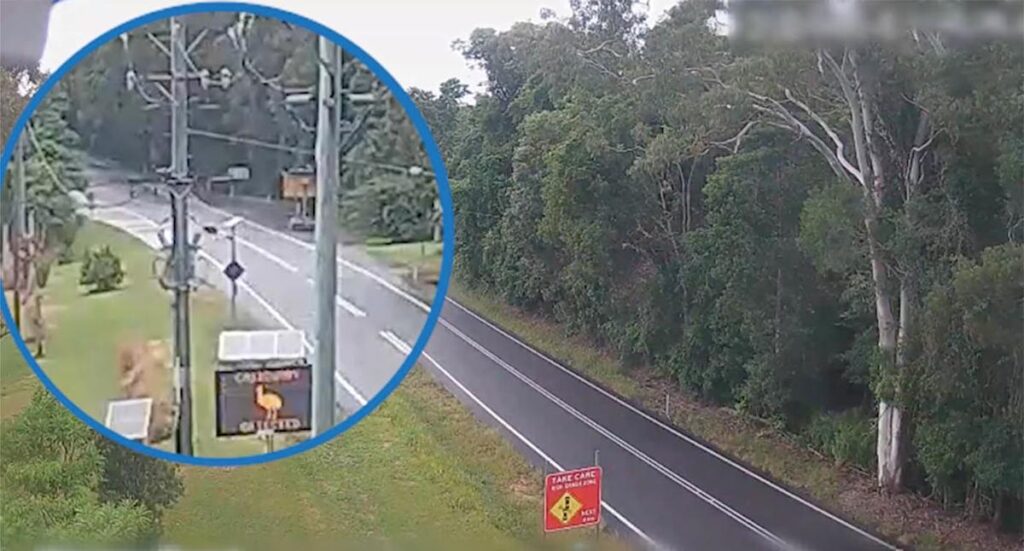
A groundbreaking trial of an AI-powered camera system on a notorious stretch of the Kennedy Highway in Far North Queensland has resulted in a significant reduction in cassowary deaths. The trial, which lasted five months, saw a 31% decrease in fatalities of the endangered bird, marking a promising step forward in wildlife conservation and road safety.
The Large Animal Activated Roadside Management and Alert (LAARMA) system was installed near Kuranda, approximately 30 kilometers northwest of Cairns. This innovative technology detects cassowaries on the road and instantly alerts drivers through an electronic sign, displaying an image of the bird with the message: “Cassowary detected.” This real-time warning prompts drivers to reduce their speed by an average of 6.3 km/h, a 10% decrease in the 60 km/h zone.
“This is a significant speed reduction. Slowing down, even by a few kilometers an hour, can substantially improve reaction times, braking distances, and outcomes in the event of a crash,” a Transport and Main Roads spokesperson told Yahoo News.
AI Technology and Its Impact
By the end of the trial, the LAARMA system demonstrated a 97% accuracy rate in detecting cassowaries. Unlike older systems that require human intervention for reprogramming, LAARMA employs self-learning AI to independently recognize the birds, even in challenging conditions such as shadows or dense foliage.
“Only displaying the warning message when cassowaries are in the area also overcomes ‘warning fatigue’ associated with static signage,” the spokesperson added.
The success of this trial opens the door to broader applications of the technology. The self-learning model of LAARMA could potentially be adapted to detect other animals or even humans, enhancing safety measures for various endangered species and improving security around schools.
Future Prospects and Challenges
Despite the trial’s conclusion and the subsequent removal of the cameras, Transport and Main Roads are considering how this technology could be implemented across other regions in Queensland. This development is particularly timely, as the Department of Environment reported that nearly two dozen cassowaries were killed in road strikes in 2024 alone, with only two surviving such incidents.
One particularly poignant case involves a cassowary known locally as Elvis, who lost five of his chicks to vehicle strikes between 2020 and 2021 on the same highway. These tragic incidents underscore the critical need for effective measures like LAARMA to protect these vulnerable birds.
Community and Environmental Implications
Beyond road safety, the trial has also sparked conversations about broader environmental responsibilities. A recent incident where a juvenile cassowary died after ingesting a fishing hook at Coquette Point near Innisfail has prompted rangers to urge fishers to responsibly dispose of fishing tackle.
This incident, coupled with the success of the LAARMA trial, highlights the interconnectedness of human activities and wildlife conservation. As authorities explore the potential for permanent implementation of AI systems like LAARMA, the hope is that such technology will become a standard feature in wildlife protection strategies.
The trial’s “amazing” results have not only provided a lifeline for the cassowary population but also set a precedent for how technology can be harnessed to address environmental challenges. As discussions continue about the technology’s future applications, the focus remains on expanding its reach to safeguard more species and improve public safety.





